From the Archives: Rheumatology Dead Word Cemetery Save
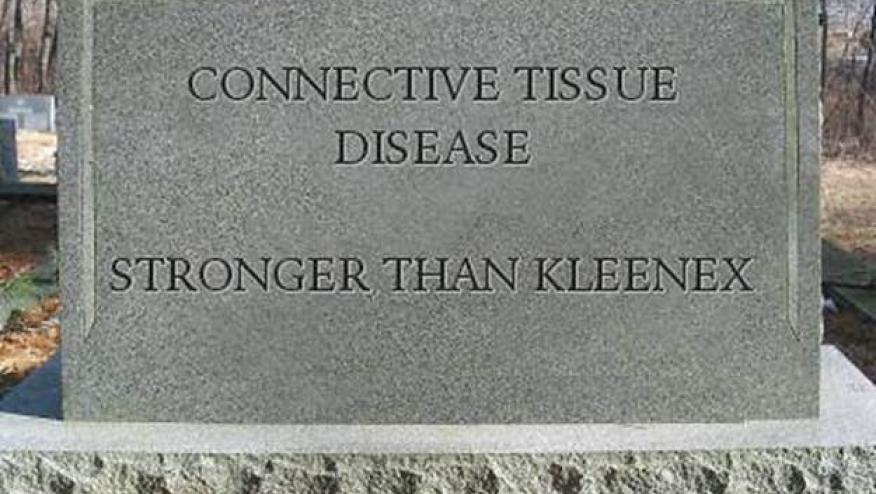
Editor's note: this blog originally appeared in 2018, and is being shared again in the spirit of Halloween. Enjoy!
Arthritis, Rheumatic Disease and Rheumatology encompass a catalogue of ageless disorders with decades, if not centuries, of history behind them. Modern rheumatology began in the late 1800s, and has since grown to a complex scientific medical discipline rooted in the advances of biochemistry, immunology, epidemiology and pharmacotherapy.
In the span of history, our understandings of rheumatologic disorders, and their many names, have undergone substantial transformations and substitutions. As such, there is an ever changing nosology of new clinical entities, and older disorders with new novel diagnostic labels.
There comes a time when a medical specialty has to reassess its history, so as to not be encumbered by it and essentially “clean house” on either unnecessary practices, unholy alliances and terminology that is useless, imprecise or at odds with scientific advancement.
Two years ago I came across a physician’s note, so confused in its misuse of terminology and coding, I kept it as an example of how words and labels can fail us (and the patient):
“…he has had multiple sites of a fairly severe rheumatoid arthritis type with features of mixed connective tissue disease and some SLE with organ involvement type overlap and Sjogren’s syndrome. He has also had some concomitant features of psoriatic arthritis with undifferentiated SpA, lumbar type and chronic lumbago….”
I recently heard of a secondary school assignment wherein students were challenged to “bury” a word that was no longer useful or appropriate. Their exercise has now evolved into an unofficial RheumNow task force to retire diagnostic terms that have grown into misuse in rheumatology and medicine.
How did we decide which words should perish? And by what criteria? Who has the final say? The criteria are simply this: a “dead word” in rheumatology is one which meets any or all of the following criteria:
- The term is imprecise, meaningless and too ill-defined to survive
- The term has been replaced by a far superior or pathologically defining term
- The term is of historic origin with no current utility
An initial word list was developed after several think-tank discussions and smart submissions from alert, non-medicated rheumatologists. These were further vetted through RheumNows social media channels with input to the question “what names or diagnoses in rheumatology should be retired”? (Their impending death notwithstanding, these terms cannot be revived by a literature search, recent publication use, ICD-9 or ICD-10 diagnostic coding. While they may be fostered by laggards or driven by bean counters, wrong is wrong and dead too. From a vocabulary standpoint, logic must prevail and we must do the write thing).
RheumNow hereby ordains the following terms as dead, buried, impractical and medically abhorrent; thus to be forever stricken from the lips of Rheumatologists and literature of Rheumatology:
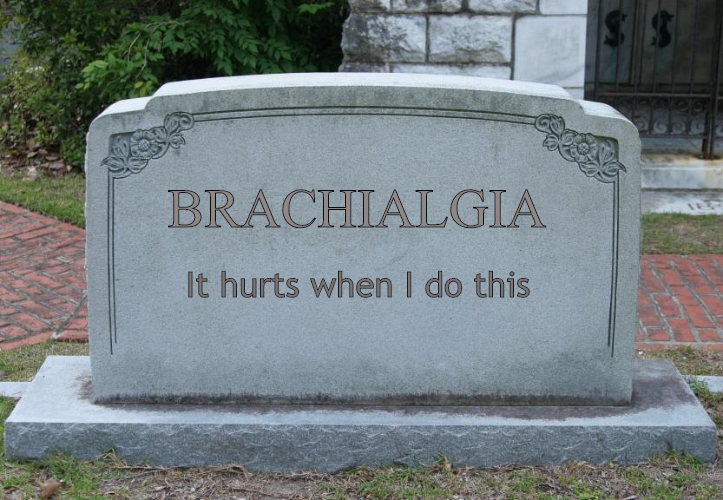
Here lies “Brachialgia”, an eloquent, often misspelled and bygone term born before the cotton gin. For too long its primary use was to confuse those with unexplained “arm pain. On a positive note, it is survived by “cervical radiculopathy”.
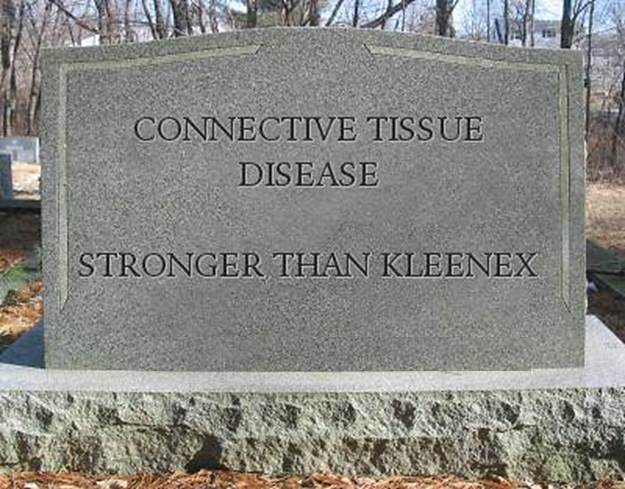
Gone but not forgotten is the perplexing connective tissue disease/disorder (CTD) – a term rooted in the notion that gooey stuff gone wrong is the surprising etiology beyond our grasp. Born of the wish to solve puzzling presentations and diagnostic mysteries, the utterance of a CTD diagnosis was once considered profound. So deep, that only the rheumatologist, with all their voodoo tests could mastermind a disease of mesenchymal origin that could explain fevers, rashes, drop foot, weight loss and palindromic swellings. For many, the use of CTD was a ruse to feign a pathophysiologic understanding, buy time for more misguided workups and more high dose steroids. With great delight, CTD has been replaced by over 100 distinct and diagnosable rheumatologic disorders. In modern terms, diseases of connective tissue more aptly refer to trouble propounded by social media and the internet.
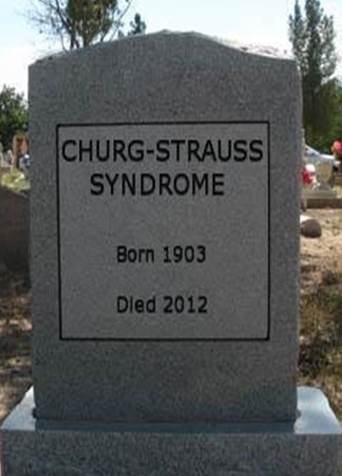
The quicksand death of Churg-Strauss was heralded by the 2012 Chapel Hill vasculitis consensus jury who declared that the old (Churg-Strauss) was out and the new (eosinophilic granulomatosis with polyangiitis-EGPA) was in. Coined after a 1951 paper by Drs. Jacob Churg and Lotte Strauss, they reported on 13 patients with a rare and unusual systemic necrotizing vasculitis that they called “Allergic Granulomatosis, Allergic Angiitis and Periarteritis Nodosa”. While many still cling to the familiarity of “Churg-Strauss”, EGPA has become the preferred term based on this consensus conference whose naming objectives preferred to focus on the histopathology of the disease.
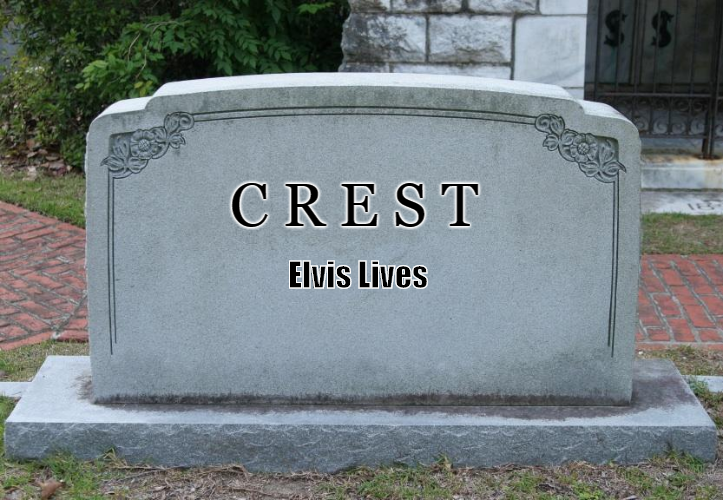
Although buried by many in favor of limited scleroderma or limited SSc, I believe that rumors of CREST’s demise may be overstated. CREST (calcinosis, Raynaud’s, esophageal dysmotility, sclerodactyly and telangiectasia) remains a powerful acronym that fully informs the unknowing of the features of a scary disorder subset. Mavens and modern rheums prefer the scientific high road in advocating for “limited scleroderma” – but is this really superior to the CREST label? An online survey of 107 MDs shows that 18% prefer CREST and 76% prefer Limited SSc. Does this mean Elvis is still alive?
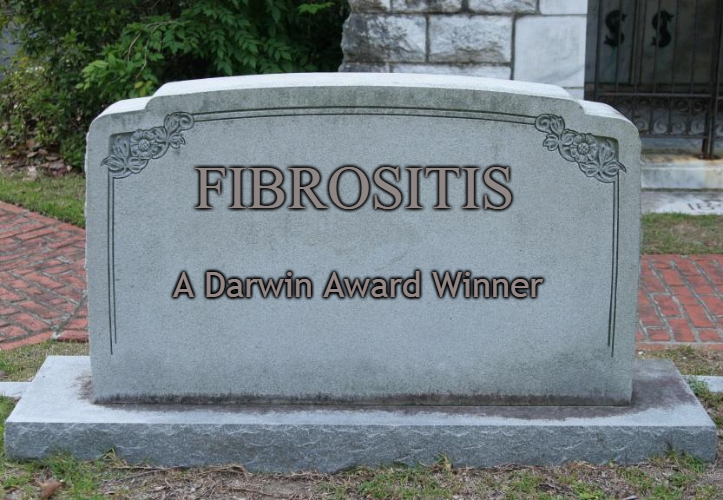
Derisive, eschewed, confused and incorrect, FIBROSITIS is now and forever discarded. This malapropism is often linked to equally and absurdly alternative terminology including fibromyositis, muscular rheumatism, psychogenic rheumatism, myofasciitis, fibromyalgia rheumatica and chronic fatigue syndrome. In 1981, Mohammed Yunnus gave “fibromyalgia” its proper label and ever since it has gone on be poorly considered and poorly treated. Still fibromyalgia runs amok, hidden behind the curtains of POTS, hypermobility syndrome, Sjogrens syndrome, irritable bowel syndrome and many more. Fibromyalgia – it’s a lot like the weather; everyone talks and nobody does anything about it. The least we can do is kill off the runt monickers of a misunderstood condition. But wait, a new generation of geniuses are crusading to rename and reinvent fibromyalgia as myalgic encephalomyelitis (ME or ME/CFS), post-viral fatigue syndrome (PVS), chronic fatigue immune dysfunction syndrome (CFIDS), or systemic exertion intolerance disease (SEID). God help us all, everyone.
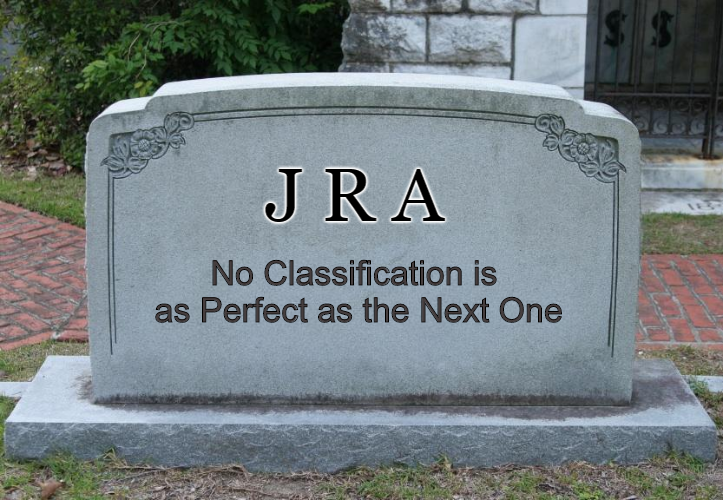
JRA (Juvenile Rheumatoid Arthritis) - Died young of outdated jargon; preceded in death by Still’s disease, juvenile chronic arthritis (JCA) and followed to the grave by juvenile arthritis (JA). Its only known survivor to date is juvenile idiopathic arthritis (JIA). JRA rivals its dirt mate above (FIBROSITIS) in a multitude of monikers, except these continue to be challenged by generations of rheumatologists who have recreated history by repeating it. Second-guessing the classification of pediatric arthritides appears to be a curriculum requirement for promotion from fellowship to faculty. ACR, ILAR, EULAR, and WeLAR committees have all given rise to their own versions leading to the new JIA classification with a new family tree limbs (e.g., ERA [enthesitis related arthropathy], juvenile PsA and undifferentiated arthritis). Nonetheless, JRA is dead and not spoken well of again. And those perplexed as to the number of JIA should Stand Down or do a pediatric fellowship.
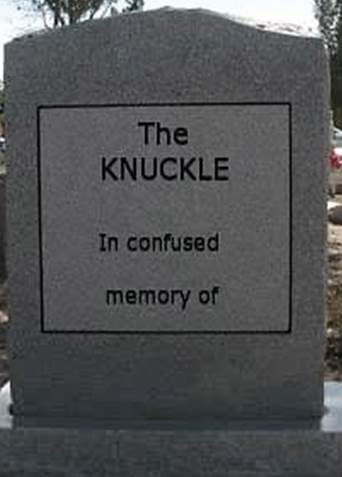
A bony fist, a joint, a diarthrodial prominence, the knuckle has been perpetrated by those who know not their anatomy and synonymously confuse RA and OA. This articulation confusingly refers to either the PIP or MCP joints. Some have resorted to naming knuckles the 1st or major knuckles (MCPs), 2nd knuckles (PIPs) and 3rd knuckles (DIP) – but these are bones, not movements in a concerto. Brandished is the knuckle, only to be employed with greater specificity by persons of strange or erroneous thinking (knuckle-heads).
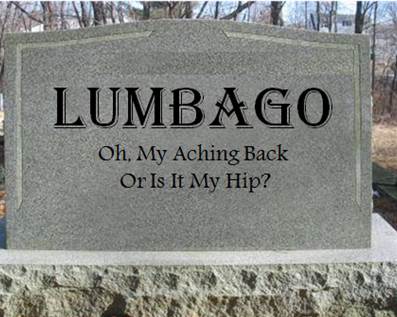
The death rattle has long passed for Lumbago; whose vagueness was defined by wherever the hand might wax over the lower spine. Ill-considered to be the predecessor of the Winnebago or an old Italian dialect, the use of this medieval lumbar term dates to 1734 when Sydenham labeled lumbago as a third form of rheumatism. Yet its days persisted well beyond mesmerism and folk medicine. As a term without cause and of numerous origins, it has been made antiquated by science, imaging and those who understand the pathways to low back pain.
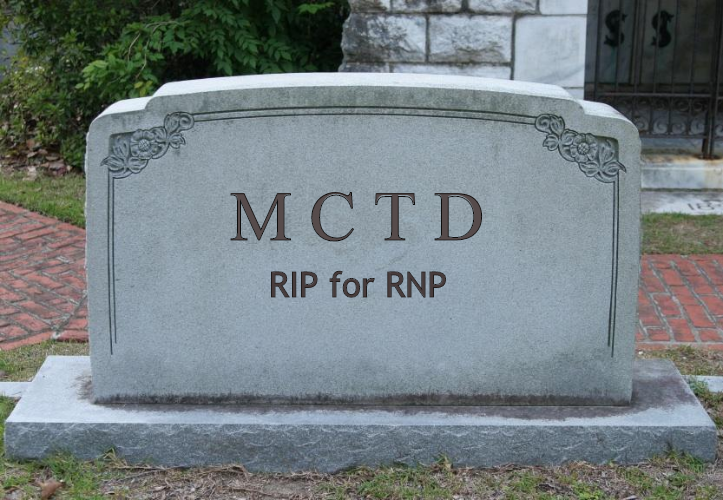
I believe it was Sting who sang “I want my MCTD”. Mixed connective tissue disease (MCTD) was first described in Gordon Sharp's 1972 AMJ article on 25 patients with high titer ANA’s with extractable nuclear antigen specificity for U1-RNP. (http://bit.ly/2OS2Q7Z) This was the prototypical overlap disease with features of lupus, rheumatoid arthritis, scleroderma, and inflammatory myositis. But it was Dr. Robert Bennet best described the disorder in 1980s as a laboratory finding (high titer RNP) in search of a clinical syndrome, as many patients with “MCTD” ultimately become reclassified into a predominant picture of RA, myositis, scleroderma or lupus. Yet there as still many who are married to this acronym (hopefully not the same who have abandoned CREST) (http://bit.ly/2MriYAL ). The preferred terminology should be undifferentiated connective tissue disease (UCTD) or overlap syndrome (qualified by the contributing elements – “overlap of RA and myositis”). Bottom line is you only treat the prevailing elements as there is no specific treatments for MCTD. RIP RNP!
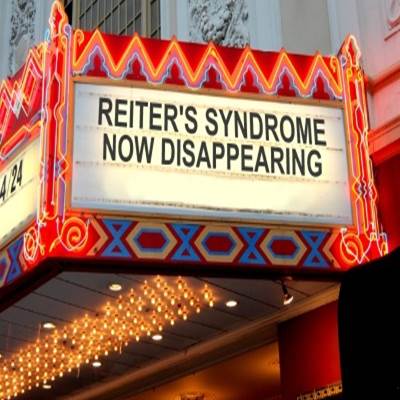
Hans Reiter was not the first to describe the well known triad, yet the disease bore his name for decades. Unsuitable and unworthy the Reiter eponym has been shunned in favor of the preferred “reactive arthritis”. The gain is a clearer understanding of the pathogenesis of such reactive oligoarticular disease. The loss of course is that that every medical student and physician trained in the last 75 years knows the answer to the question, “what diagnosis encompasses the triad of triad – arthritis, conjunctivitis and urethritis”? Education and propriety shall prevail.
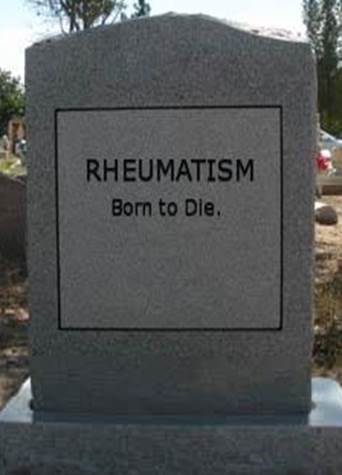
RHEUMATISM? "Rheum" is a Greek word that means "flow" or refers to a thin mucous discharge from the mouth or eyes (usually during sleep). Often tacked on as a suffix, “ism” tends to define doctrines, discriminatory attitudes or beliefs. Thus, even at its roots, “Rheumatism” is a meaningless term. One Twitter advisor said 'rheumatism' means everything and nothing at the same time. In 2014, the rheumatology journal changed its name from Arthritis & Rheumatism to Arthritis and Rheumatology. Then editor, Dr. Joan Bathon stated that for years “…‘rheumatism’ was imprecise. Now it is not only imprecise, but obsolete.” Dr. Gary Firestein noted that “…new name of A&R is emblematic of our evolution to a molecular- and mechanism-based approach to understanding and treating patients with rheumatic diseases.”
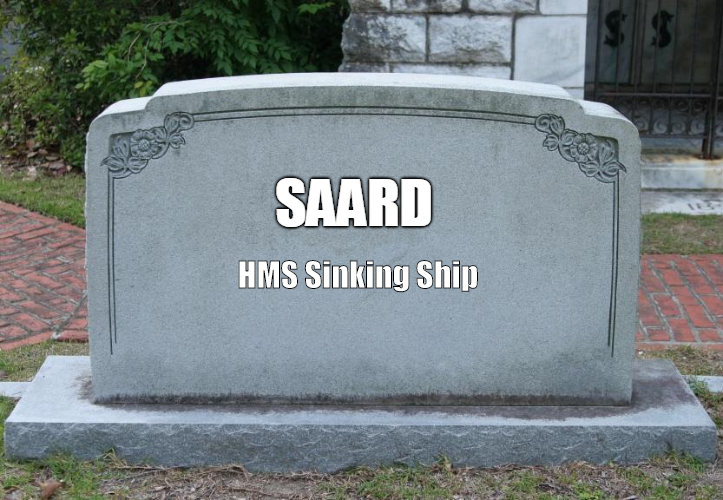
SAARD (Slow acting, anti-rheumatic drug) - With each fad of drug development comes a new crew of copycat redefiners who are unimaginatively compelled to redefine “DMARD”. Hence the birth, and thereafter death, of copycats SAARD, SMARD, second-line agents, DC-ART (disease controlling antirheumatic therapy), csDMARD (conventional synthetic disease-modifying antirheumatic drugs) or tsDMARD (targeted synthetic disease-modifying antirheumatic drugs. All have weakly challenged the rule of DMARD, pointing to the difficulty in defining “disease modifying” or the mechanistic or targeting specificity of DMARDs. Frankly, the target specificity isn’t all its cranked up to be, as most effective therapies, including biospecific biologics, have more than one mechanism of action. DMARD proxies need not apply.
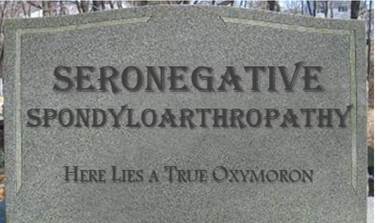
Defining what you are by stating what you ain’t fails at diagnostic certainty, while proclaiming pseudoscientific ignoramous status. Like JRA, spondyloarthritis bears no relations to rheumatoid arthritis and clearly has a serology of its own. Early on, “SpA” was intended to portray the HLA-B27 linked overlap between ankylosing spondylitis, reactive arthritis, psoriatic arthritis and enteropathic arthritis. Clearly the misuse of “seronegative” set back those objectives by years. Even today there are still rheumatologists who misuse this term while misdiagnosing patients who have something other RA, often without regard for sacroiliitis or HLA-B27. Thus, seronegative spondyloarthropathy should be stricken from all chapters, classification schemes or any discussion that includes the word seronegative.
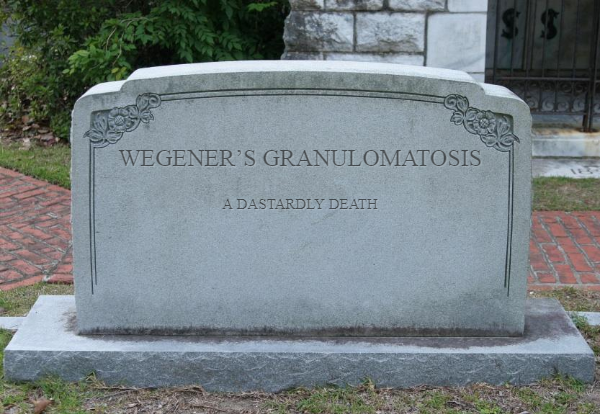
Nosology often evolves from the historic to the scientific. In rheumatology, there has been a call to replace eponym based diseases with more scientifically accurate terms. Many are advanced by our understanding while others are prompted by tainted or questionable legacies known to the eponym – such is the dagger dealt to Wegener’s granulomatosis (now preferred to GPA). Jennette recently stated, “No matter how logical and appropriate a name may be, if it is not usable or used, it is of no lasting value” and “eponyms are less effective than more descriptive terms that refer to one or more distinctive features of a disease”. (http://bit.ly/2La79JO).
Call to Action
In 1966, the “Glossary of rheumatology: abbreviations, signs, rare or little known diseases or syndromes with or without names of persons, synonyms” was published in the French literature (Rhumatologie. 1966 Oct;18(8):335-40).
In 1983, John Decker published the ARA Glossary Committee report (http://bit.ly/2MnBda4) in Arthritis & Rheumatism noting “Physicians manage their patients as individuals, each with a unique disorder. yet we must communicate in terms of groups of patients sharing similar symptoms, signs, and prognoses; this necessitates specific diagnoses and a classification.”
In 1994, the ACR commissioned a 3-part glossary for the Rheumatic diseases that is out of print and a relic that is sorely needed today. However, it remains the most authorative resource on terminology, definitions, and descriptions of diagnostic entities and terms, tests and procedures.
RheumNow has done in a few hours what would take the ACR, EULAR or OMERACT years to codify, classify and publish. Nonetheless, a more intelligent and democratic exercise should renew and redefine our glossary, as a lot has changed in the last 20 years.
Join The Discussion
Whew! It's about time! Death to tyranical Eponymns! (despite our fond training memories)
If we mourn the passing of Connective Tissue Disease, we should also euthanize UCTD in favor of overlap syndrome, realizing that it is also a critically ill term that should not survive for long.
How can it be suggested that on one hand we retire the term: connective tissue disease, yet advocate for the use of UCTD? Overlap syndrome doesn't indicate what discipline we are in. Many specialties have their "overlap syndromes". For years, the term systemic autoimmune rheumatic disease (SARD) has been recommended as more precise--let's stick with that.
EPONYMS--part 1:
I agree that it is time to retire eponyms for many reasons. As has been stated elsewhere, their use is often random, inconsistent, idiosyncratic, confused, and heavily influenced by local geography and culture, often to the exclusion of others that may deserve greater credit. Case in point—Crohn disease instead of Ginzburg or Oppenheimer, who arguably were more responsible for its description than he who came first alphabetically. Or when in Turkey, it’s Behçet disease; but on the other side of the Aegean, Adamantiades gets credit too.
In the last several decades, some of the impetus for abandoning eponyms, especially within rheumatology, has been the realization that some of the physicians/scientists for whom these conditions are remembered were less than honorable people. Hans Reiter was convicted of war crimes at the Nuremberg trials for his medical experiments at Buchenwald, being responsible for at least 200 deaths due to experimentally contracted typhus. Friedrich Wegener joined the Nazi Party in 1932 and as a high-ranking military physician at a facility that performed experiments on prisoners may well have turned a blind eye.
EPONYMS--part 2
But the goal of no longer propagating the names of disreputable and despicable individuals has been misinterpreted as the rationale for the retirement of all eponyms for similar reasons. I had the occasion to lecture on vasculitis syndromes to our medical housestaff. When I asked the residents why we had replaced Churg-Strauss syndrome with the name EGPA, I was told that it was “because they were Nazis”.
NO! They were the opposite of Nazis. They were Jewish refugees from Nazi oppression, Jacob Churg from Poland, Lotte Strauss from Germany, who made their discoveries here in the US and dedicated their careers to the betterment of mankind.
Let us retire the eponyms but may the names not be forgotten and may the memories of the righteous be honored.










If you are a health practitioner, you may Login/Register to comment.
Due to the nature of these comment forums, only health practitioners are allowed to comment at this time.